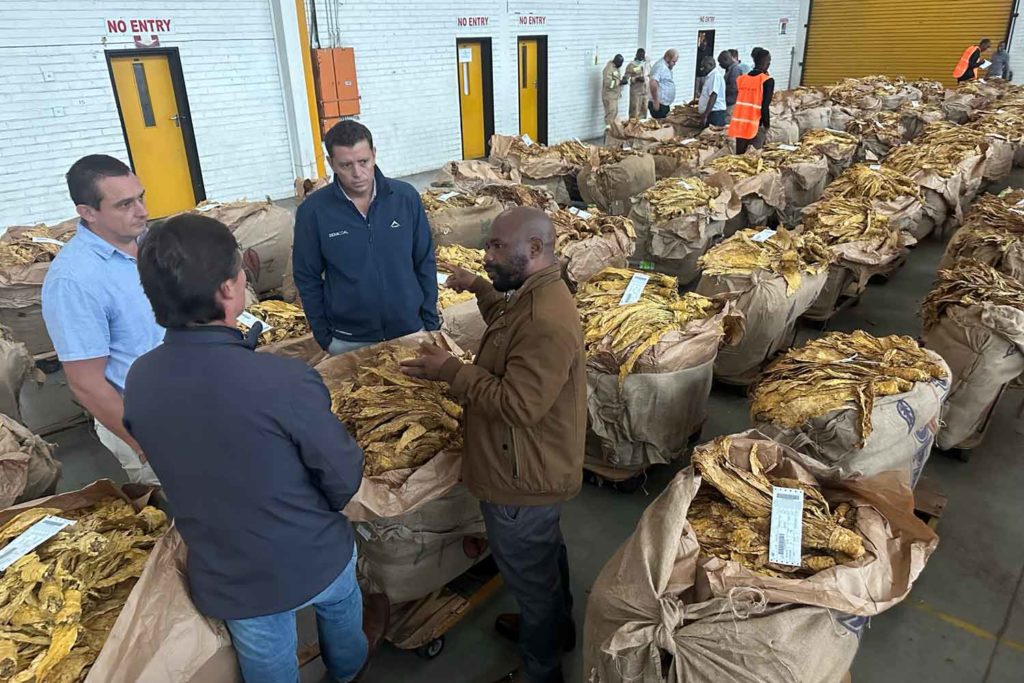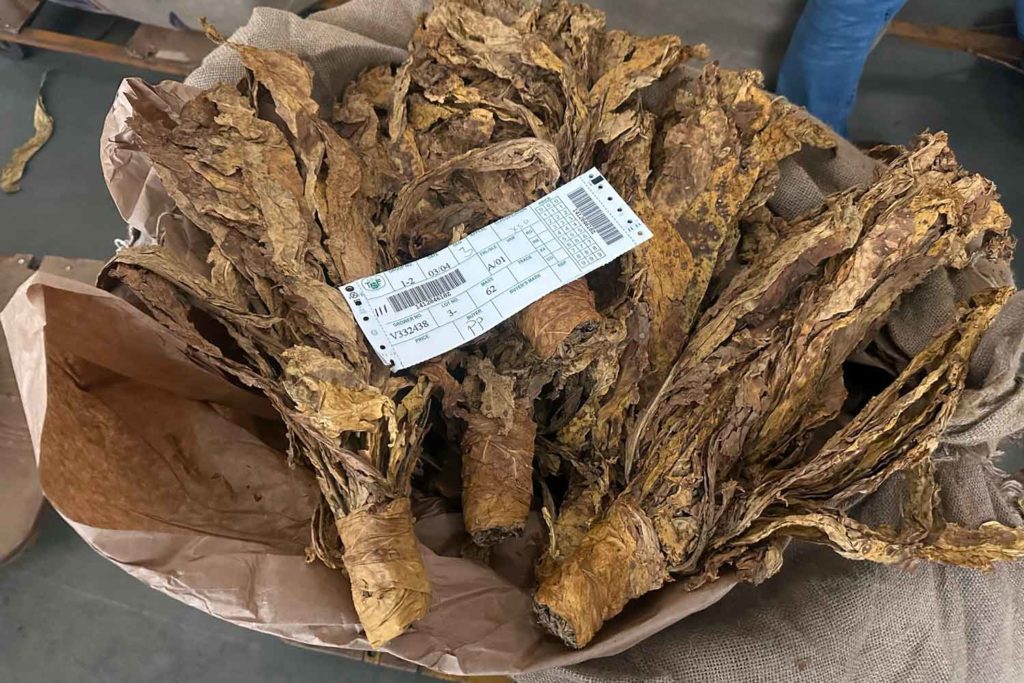‘Not Really a Gamble’
- Also in TR Leaf Print Edition Special Report
- May 1, 2023
- 0
- 6 minutes read

Leaf Dealers Look Forward to Receiving a Good Quality Crop
By Taco Tuinstra
While the Tobacco Industry and Marketing Board had yet to release official figures at the time of Tobacco Reporter’s visit to Zimbabwe in early April, traders were expecting farmers to bring 230 million kg to market in the 2023 selling season. That compares with 212 million kg in 2022, which in turn was up from the two years prior.
The increase was due in part to good climate conditions despite the influence of an El Nino. The periodically recurring atmospheric phenomenon typically results in wetter than normal conditions in southern Africa from December to February. But in the event, it wasn’t all that wet.
“The crop was planted on time, and weather patterns were generally favorable,” says Alex Tait, managing director of Mashonaland Tobacco Co., a subsidiary of Alliance One International. As is the case throughout Africa, curing space proved a constraint in Zimbabwe this year. Fast ripening in some areas created some quality challenges toward the tail-end of the season, but nothing pointing to disaster. “It was a normal season,” says Tait.

(Photos and video: Taco Tuinstra)
Zimbabwean volumes have largely recovered from the disruption that followed the government’s land reform program, which shifted the emphasis from commercial growing to small-scale farming during the 2000s and at one point saw the crop plummet to 50 million kg.
The quality produced by smallholders has also been steadily improving, thanks in part to contractors’ extensive support of their growers. This season, overall quality is fair to good, according to Mark Mason, managing director of Zimbabwe Leaf Tobacco Co. (ZLT), which is associated with Universal. “Despite the majority being smallholder, the Zimbabwean tobacco grower is a good farmer,” he says. “If they are serviced well, they produce a very acceptable crop.” In fact, Zimbabwe’s combination of climate, soils and skills means tobacco merchants have come to expect a decent crop, observes Mason. “It’s not really a gamble for us—unless the weather gets very poor,” he says.
Volumes this year were further boosted by good pricing in the 2022 marketing season, which spurred growers’ interest. What’s more, the payment modalities have recently improved, with growers receiving a higher share of their earnings in U.S. dollars as opposed to the less valuable local currency.

Meanwhile, pricing has become quite competitive in the contracting arena. “We have a situation in which more contractors are chasing fewer growers,” says Mason. “If you want to expand in this market, you have to coax a grower to come and join you. You have to argue your case, explain why he should leave X and join Y. The pricing this year will take into account some of those costs.”
Mason expects an increase of about 9 percent in the average per-kilo tobacco price this year, also as a result of the rising cost of production. The price of fertilizer, in particular, spiked in the run-up to this growing season, mostly due to the war in Ukraine, which traditionally supplied many of the raw materials needed for fertilizer production.
At the same time, erratic power supply in Zimbabwe forced commercial growers, who need electricity to operate their curing barns, to use diesel generators, which is more expensive than pulling power from the grid. The shortages were driven by low water levels in Lake Kariba, which houses a major hydroelectric power dam and is crucial to regional energy security, and maintenance at the Hwange power station. Power supply will likely remain a concern going forward, but Tait is cautiously optimistic that recent rains in the catchment areas along with progress at Hwange will help ease the shortages next season.

Despite the anticipated price hikes, exporters expect demand for Zimbabwean leaf to be firm again this season. Tait believes part of that is due to the lingering impact of Covid. “People thought that smoking would go down during the pandemic, but it actually went up,” he says. So the global crop size dipped over the past two years even as cigarette consumption increased. “Of course, there is a question about how long that situation will last,” says Tait. “Zimbabwe’s crop has gone up, as has Brazil’s, so we may see demand level out next year.”
The switch to smallholder growing has radically changed the leaf merchants’ business models. “In the past you used to go and buy what you liked and sell it; now you get a crop throw and you have to figure out how to market that effectively,” says Mason. With contracting accounting for 90 percent of Zimbabwean volumes, dealers these days operate extensive agronomic departments. ZLT alone has well over 100 on-the-ground field staff along with countless cars and motorbikes to service its growers in the countryside. The merchants have also (reluctantly) assumed the role of financiers because the new growers have no collateral with which to secure bank loans. Post land reform, all agricultural land belongs to the state in Zimbabwe.
While dealing directly with thousands of smallholders is a herculean logistical exercise with a huge impact on cost, the shift has also had an unexpected advantage for the tobacco merchants. “In a way, it’s what has allowed us to tick the right boxes because now everything is traceable,” says Tait. “The manner in which ESG [environmental, social and governance] requirements have evolved in recent years is working out for us because we are right down to the farm level to make sure that what the grower is doing is compliant.”

